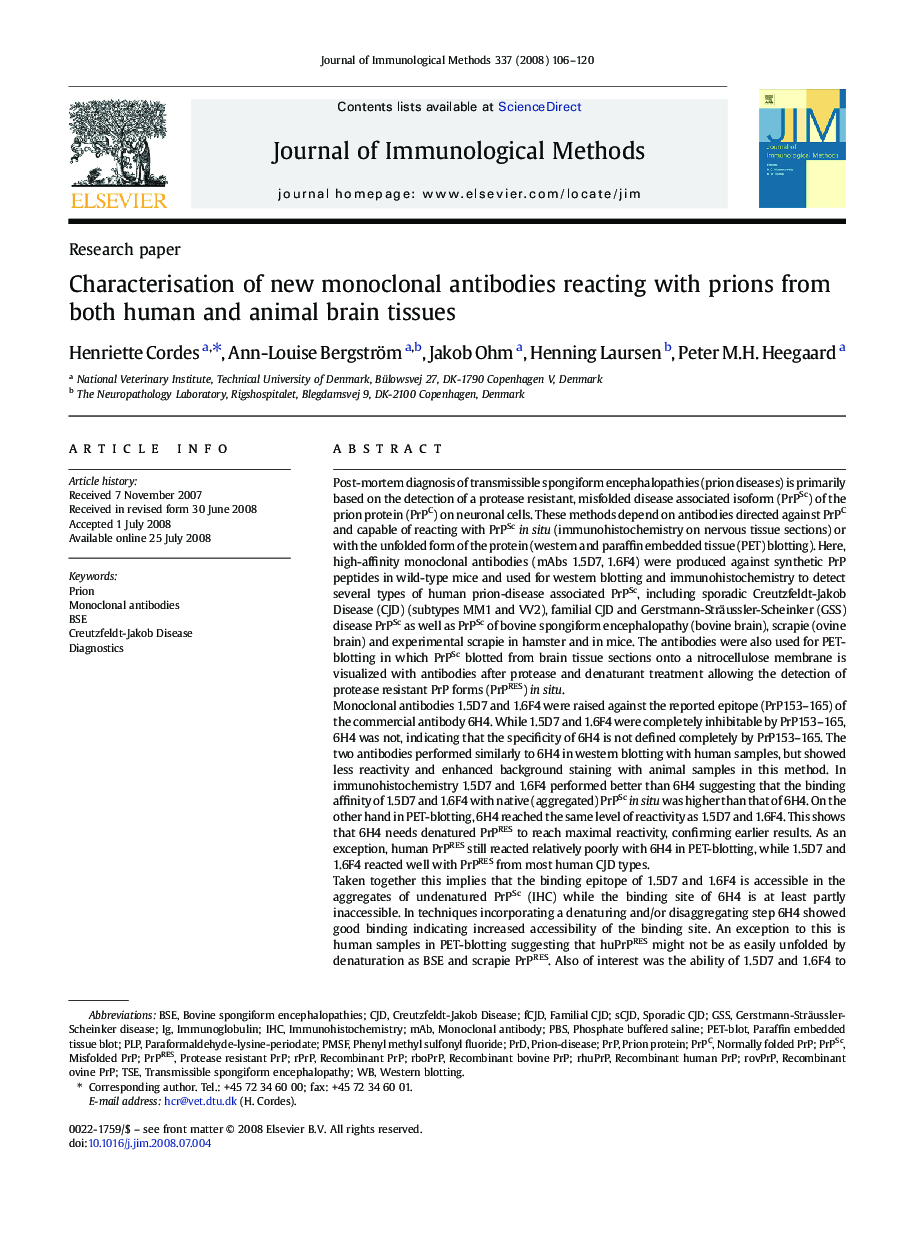| Article ID | Journal | Published Year | Pages | File Type |
|---|---|---|---|---|
| 2088898 | Journal of Immunological Methods | 2008 | 15 Pages |
Post-mortem diagnosis of transmissible spongiform encephalopathies (prion diseases) is primarily based on the detection of a protease resistant, misfolded disease associated isoform (PrPSc) of the prion protein (PrPC) on neuronal cells. These methods depend on antibodies directed against PrPC and capable of reacting with PrPScin situ (immunohistochemistry on nervous tissue sections) or with the unfolded form of the protein (western and paraffin embedded tissue (PET) blotting). Here, high-affinity monoclonal antibodies (mAbs 1.5D7, 1.6F4) were produced against synthetic PrP peptides in wild-type mice and used for western blotting and immunohistochemistry to detect several types of human prion-disease associated PrPSc, including sporadic Creutzfeldt-Jakob Disease (CJD) (subtypes MM1 and VV2), familial CJD and Gerstmann-Sträussler-Scheinker (GSS) disease PrPSc as well as PrPSc of bovine spongiform encephalopathy (bovine brain), scrapie (ovine brain) and experimental scrapie in hamster and in mice. The antibodies were also used for PET-blotting in which PrPSc blotted from brain tissue sections onto a nitrocellulose membrane is visualized with antibodies after protease and denaturant treatment allowing the detection of protease resistant PrP forms (PrPRES) in situ.Monoclonal antibodies 1.5D7 and 1.6F4 were raised against the reported epitope (PrP153–165) of the commercial antibody 6H4. While 1.5D7 and 1.6F4 were completely inhibitable by PrP153–165, 6H4 was not, indicating that the specificity of 6H4 is not defined completely by PrP153–165. The two antibodies performed similarly to 6H4 in western blotting with human samples, but showed less reactivity and enhanced background staining with animal samples in this method. In immunohistochemistry 1.5D7 and 1.6F4 performed better than 6H4 suggesting that the binding affinity of 1.5D7 and 1.6F4 with native (aggregated) PrPScin situ was higher than that of 6H4. On the other hand in PET-blotting, 6H4 reached the same level of reactivity as 1.5D7 and 1.6F4. This shows that 6H4 needs denatured PrPRES to reach maximal reactivity, confirming earlier results. As an exception, human PrPRES still reacted relatively poorly with 6H4 in PET-blotting, while 1.5D7 and 1.6F4 reacted well with PrPRES from most human CJD types.Taken together this implies that the binding epitope of 1.5D7 and 1.6F4 is accessible in the aggregates of undenatured PrPSc (IHC) while the binding site of 6H4 is at least partly inaccessible. In techniques incorporating a denaturing and/or disaggregating step 6H4 showed good binding indicating increased accessibility of the binding site. An exception to this is human samples in PET-blotting suggesting that huPrPRES might not be as easily unfolded by denaturation as BSE and scrapie PrPRES. Also of interest was the ability of 1.5D7 and 1.6F4 to discriminate between two allelic variants of PrP CJDSc (VV vs. MM) in immunohistochemistry as opposed to the normally used antibody 3F4.
